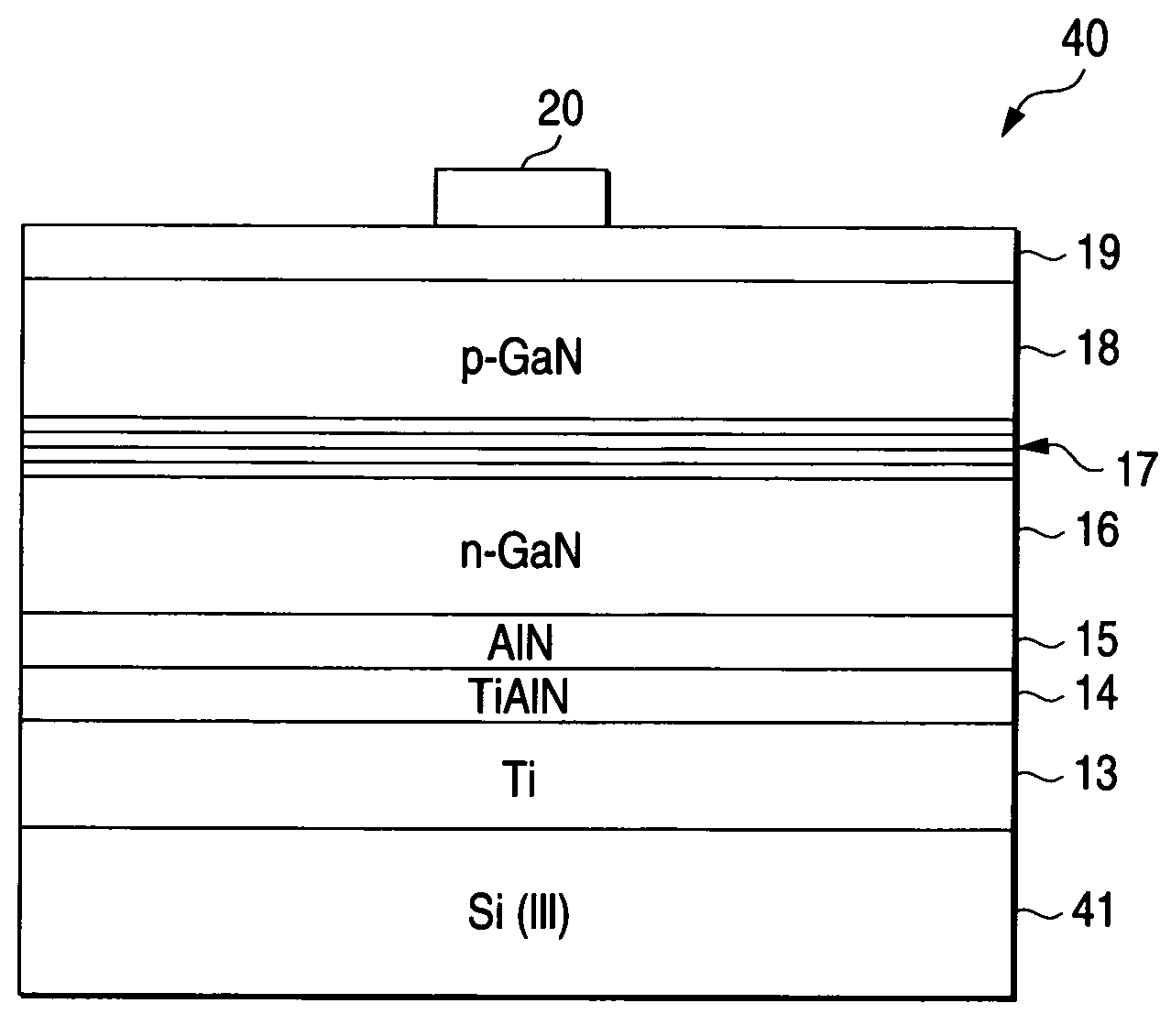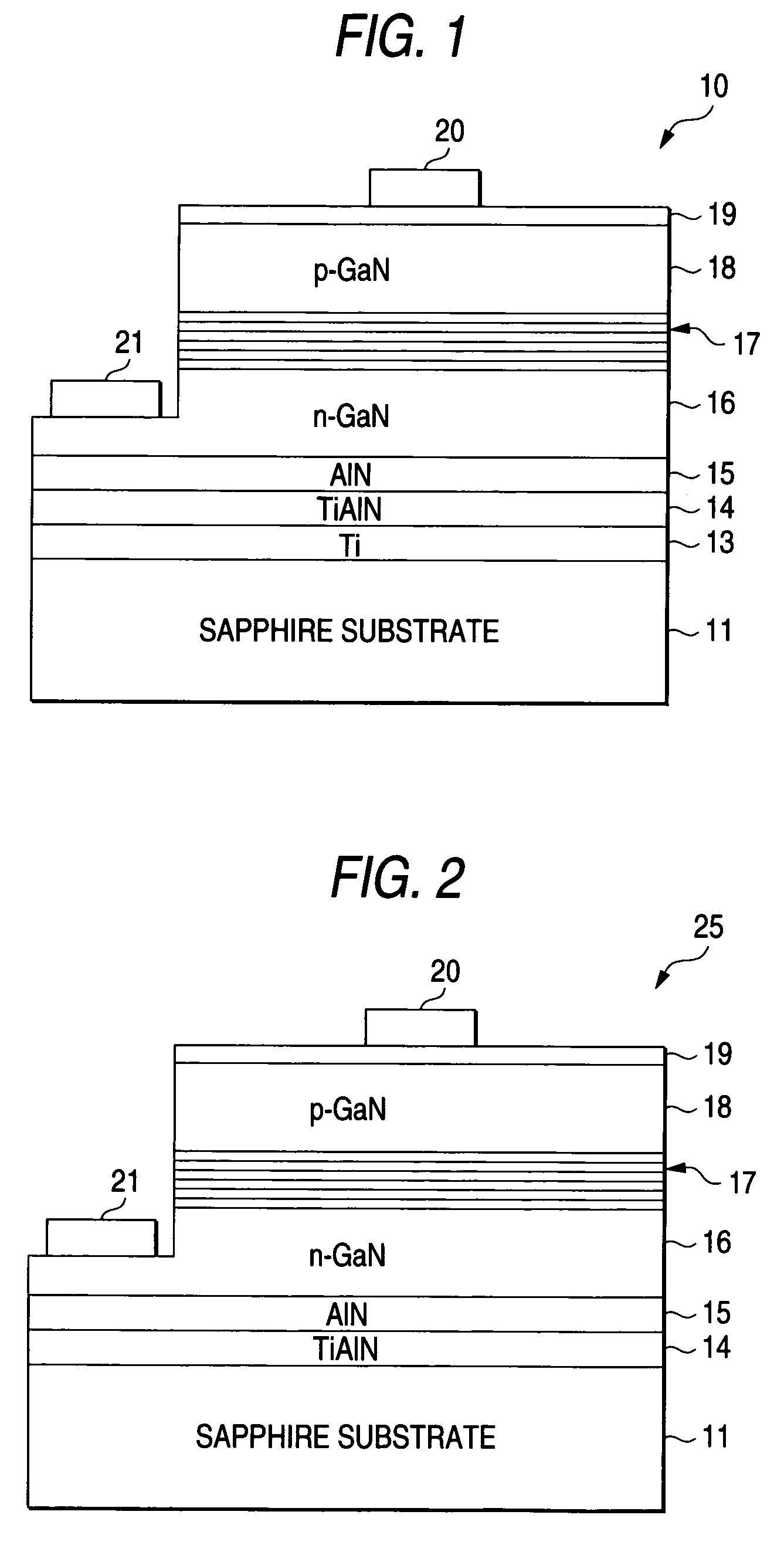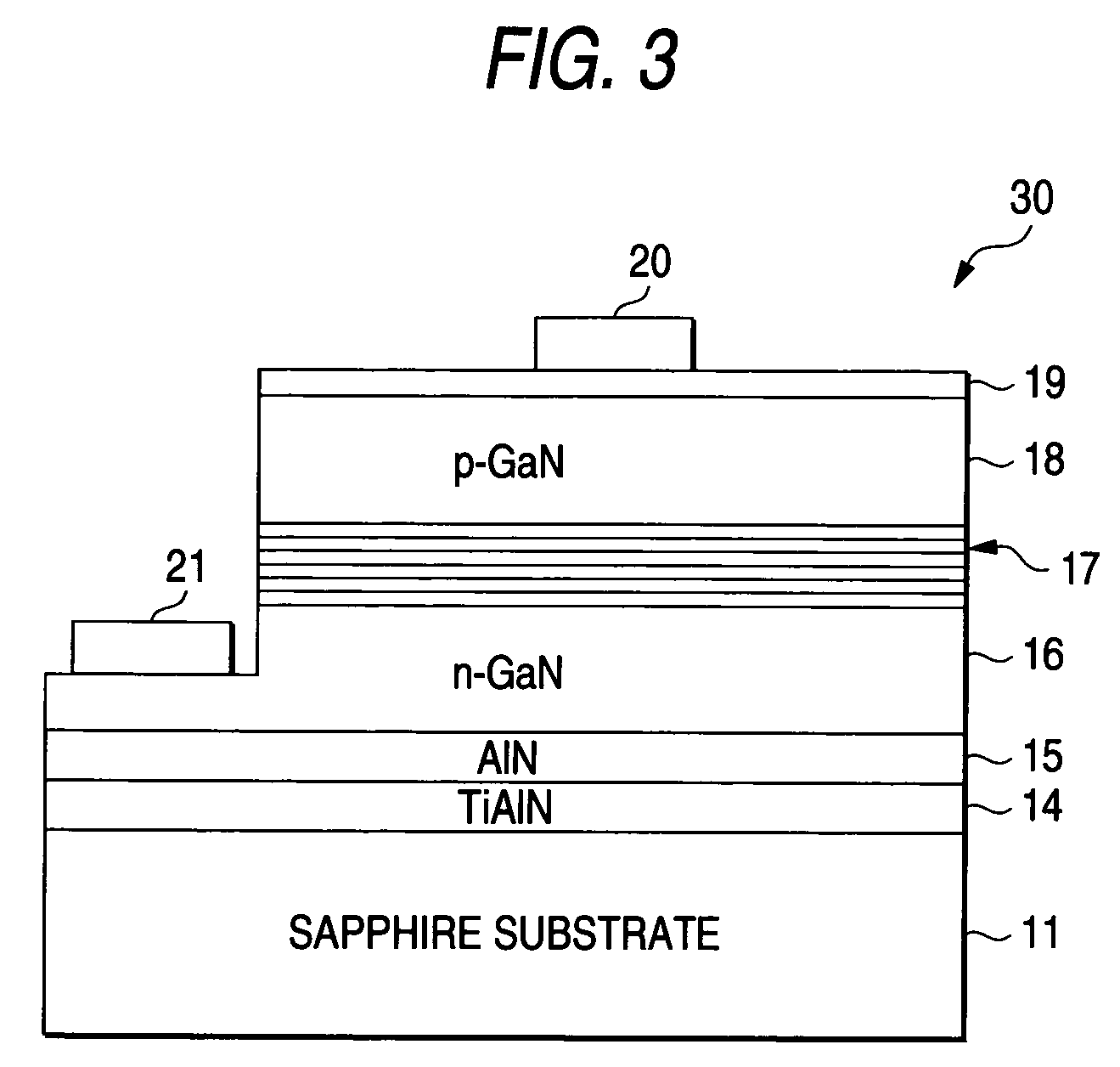Compound semiconductor element based on Group III element nitride
a technology of nitride and compound semiconductors, which is applied in the direction of semiconductor devices, basic electric elements, electrical equipment, etc., can solve the problems that metal nitride having such a thickness has never been provided, and achieve the effects of improving crystallinity, good crystallinity, and good crystallinity
- Summary
- Abstract
- Description
- Claims
- Application Information
AI Technical Summary
Benefits of technology
Problems solved by technology
Method used
Image
Examples
first embodiment
[0045]This embodiment shows a light-emitting diode 10. FIG. 1 shows the configuration of the light-emitting diode 10.
[0046]Specifications of respective layers are as follows.
[0047]
LayerComposition: Dopantp-type layer 18p-GaN: MgLayer 17 containing acontains a layer of InGaNlight-emitting layern-type layer 16n-GaN: SiBuffer layer 15AlNMetal nitride layer 14Ti0.97Al0.03NTi layer 13TiSubstrate 11sapphire
[0048]The n-type layer 16 may be of a double-layered structure with an n− layer of a low electron density on the layer 17 containing a light-emitting layer side and an n+ layer of a high electron density on the buffer layer 15 side. The latter is called “n-type contact layer”.
[0049]The layer 17 containing a light-emitting layer is not limited to a superlattice structure. A single hetero type structure, a double hetero type structure, a homo-junction type structure, or the like, may be used as the structure of the light-emitting device. A single quantum well structure may be also used.
[0...
second embodiment
[0058]FIG. 2 shows a light-emitting diode 25 according to a second embodiment. Incidentally, parts the same as those in the first embodiment are referred to by numerals the same as those in the first embodiment and their description will be omitted. The light-emitting diode 25 according to this embodiment is configured so that the Ti layer 13 is omitted from the light-emitting diode shown in FIG. 1. The metal nitride layer 14 is formed directly on the sapphire substrate.
[0059]Also in the light-emitting diode 25 configured as described above, Group III nitride compound semiconductor layers 16 to 18 of excellent crystallinity can be obtained.
third embodiment
[0060]FIG. 3 shows a light-emitting diode 30 according to a third embodiment. Incidentally, parts the same as those in FIG. 2 are referred to by numerals the same as those in FIG. 2, and their description will be omitted. In the light-emitting diode 30 according to this embodiment, a configuration that an n-type electrode 21 is formed on the metal nitride layer 14 is applied to the light-emitting diode shown in FIG. 2. Because the metal nitride layer 14 has electrically conductive characteristic higher than that of the n-GaN layer 16, an electric current can be distributed into the Group III nitride compound semiconductor layers more uniformly as a whole. In addition, because the metal nitride layer 14 of TiAlN contains the same element (Al) as that of then-type electrode 21, contact resistance can be reduced as well as the adhesion between the two can be improved.
PUM
| Property | Measurement | Unit |
|---|---|---|
| thickness | aaaaa | aaaaa |
| thickness | aaaaa | aaaaa |
| lattice constant | aaaaa | aaaaa |
Abstract
Description
Claims
Application Information
 Login to View More
Login to View More - R&D
- Intellectual Property
- Life Sciences
- Materials
- Tech Scout
- Unparalleled Data Quality
- Higher Quality Content
- 60% Fewer Hallucinations
Browse by: Latest US Patents, China's latest patents, Technical Efficacy Thesaurus, Application Domain, Technology Topic, Popular Technical Reports.
© 2025 PatSnap. All rights reserved.Legal|Privacy policy|Modern Slavery Act Transparency Statement|Sitemap|About US| Contact US: help@patsnap.com



